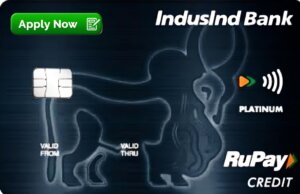Introduction: The Savings Account Landscape
In the journey toward financial wellness, a savings account is often the foundational cornerstone. It serves as a necessary buffer, the bedrock for an emergency fund, and the safe harbor for money earmarked for near-term goals, such as a down payment on a house or a major vacation. For decades, the ubiquitous “traditional savings account” offered by the local brick-and-mortar bank was the only game in town. However, the rise of digital banking and the shifts in the global economy have ushered in a more powerful alternative: the high-yield savings account (HYSA).
While both accounts offer a secure, liquid, and federally insured place to store cash, the differences between them today are so pronounced that choosing the wrong one can cost a saver thousands of dollars over time. This comprehensive analysis will serve as the definitive guide to understanding these two deposit vehicles, exploring the nuances of their interest rates, fee structures, accessibility, and overall utility in a modern financial strategy. By dissecting the core mechanics of each, we will empower the reader to make a strategic decision that aligns with their financial priorities.
- Kotak Neo Low Brokrage
- INDMoney Invest Global market
- Super Money UPI App Get Reward
- CoinDCX: Redefining Crypto Access in India
Part I: Defining the Contenders
To compare effectively, we must first establish clear definitions and typical characteristics for each account type.
1. The Traditional Savings Account: The Corner Bank Classic
A traditional savings account is typically offered by large, national, or regional brick-and-mortar financial institutions, like major commercial banks and local credit unions.
Primary Function: To provide a safe, convenient, and accessible place for consumers to park money that is not needed immediately.
Interest Rate (APY): The most defining negative characteristic. The Annual Percentage Yield (APY) for traditional savings accounts is notoriously low. Many of the largest banks, for instance, offer rates that hover near 0.01%, while the national average in today's market often sits around 0.40%. In real terms, a 0.01% APY means that a saver with $10,000 in their account would earn just $1.00 in interest over an entire year. This difference means the cash is often losing purchasing power to inflation.
Accessibility: Unparalleled in terms of physical access. Traditional banks offer a vast network of physical branches for in-person deposits (especially cash) and withdrawals, as well as an extensive network of ATMs.
Account Fees: Often charge a monthly maintenance fee (typically $3 to $10) unless the accountholder meets certain criteria, such as maintaining a minimum daily balance (e.g., $300) or setting up a recurring monthly transfer from a linked checking account.
Linkage to Checking: Often seamlessly linked to a checking account at the same institution, making internal transfers instant and easy, and facilitating overdraft protection.
2. The High-Yield Savings Account (HYSA): The Digital Disruptor
A high-yield savings account is, first and foremost, a savings account that pays an interest rate substantially higher than the national average.
Primary Provider: HYSAs are most commonly offered by online-only banks, credit unions, and financial technology (fintech) companies. The lack of overhead costs (i.e., no physical branches to maintain) allows these institutions to pass those savings on to the consumer in the form of higher APYs.
Interest Rate (APY): The key selling point. The top HYSAs currently offer APYs up to or more, which can be ten to fifty times higher than the national average for a traditional savings account. This higher rate is almost always variable, meaning it fluctuates with the broader economic environment and Federal Reserve interest rate changes.
Accessibility: Access is primarily digital—via websites and mobile apps. Cash deposits are typically not straightforward and may require a workaround. However, electronic transfers (ACH) are easy and often free, though they may take business days.
Account Fees: The vast majority of HYSAs are offered with no monthly maintenance fees and often have no minimum balance requirements to earn the advertised APY. Their business model relies on attracting large pools of deposits, not generating revenue from customer fees.
Target Use: Perfect for emergency funds, short-term savings goals, and any idle cash that needs to remain liquid and secure.
Part II: The Critical Comparison: Rates and the Power of Compounding
The most significant and financially impactful difference between the two accounts lies in their Annual Percentage Yield (APY). This is the metric that determines how quickly your money grows.
The Interest Rate Disparity in Practice
Let’s illustrate the dramatic effect of the APY difference with a tangible example. Consider a saver with a consistent balance over five years:
In a Traditional Bank at APY: The saver earns approximately $5.00 over the five-year period.
In a High-Yield Savings Account at APY: The saver earns over $2,460 over the same five-year period.
In this common scenario, the HYSA earns the saver over four hundred times the interest. The simple act of moving your cash from a major-bank savings account to a high-yield account transforms the money from a passive, depreciating asset into a genuine income stream.
The Magic of Compounding
Both accounts utilize compound interest, meaning the interest you earn is added to your principal balance, and then the next round of interest is calculated on the new, larger total. HYSAs supercharge this process. Since the interest rate is significantly higher and often compounds daily, the initial earnings are larger, leading to a much steeper and more potent growth curve. This compounding effect is the true engine of wealth-building for conservative savers, and HYSAs offer a vastly superior mechanism for wealth accumulation.
Part III: Security, Liquidity, and Accessibility
While the APY is the differentiator, the following factors address the core functionality of a savings account.
A. Safety and Security: The FDIC Insurance Mandate
A common misconception is that because HYSAs are often associated with online banks, they are somehow riskier than their brick-and-mortar counterparts. This is categorically false, provided you choose an insured institution.
FDIC/NCUA Protection: Both traditional and high-yield savings accounts offer the same gold standard of security. If the bank is an FDIC member (Federal Deposit Insurance Corporation) or the credit union is an NCUA member (National Credit Union Administration), deposits are insured up to the standard limit of per depositor, per insured financial institution, for each ownership category. This guarantee is backed by the full faith and credit of the U.S. government. A bank failure, even for an online-only bank, simply means the customer’s insured funds are safe and returned.
Vetting is Key: The only due diligence required of the saver is to verify the institution's FDIC or NCUA status—a quick search that can prevent any potential issues.
B. Liquidity and Withdrawal Access
Both accounts are designed for liquidity, meaning the funds are not locked away, as they would be in a Certificate of Deposit (CD).
Traditional: Offers ultimate liquidity and speed for cash transactions. Funds can be immediately accessed via an ATM or withdrawal at a branch.
HYSA: Funds are equally liquid but access is slower. Withdrawal usually requires an electronic ACH transfer to a linked checking account, which can take business days. While this slight delay is a minor inconvenience, some financial experts argue it serves as a built-in psychological barrier against impulse spending, reinforcing the account’s role as a true savings vehicle.
Withdrawal Limits: While a federal regulation (Regulation D) that once limited all savings accounts to six convenient withdrawals per month was suspended, banks are free to impose their own transfer limits. Many HYSA providers, and even some traditional banks, still maintain a similar limit to discourage customers from treating the savings account like a checking account.
C. Banking Convenience and Ecosystem
The banking experience is where the accounts diverge most sharply.
Part IV: Strategic Financial Planning: Aligning the Account with Your Goals
The choice between a High-Yield and a Traditional savings account is not just about the numbers; it’s about aligning the account’s features with your financial goals and personal banking preferences.
The Best Use Cases for the High-Yield Savings Account
The Emergency Fund: This is the ideal home for 3-6 months' worth of living expenses. The money must be safe and liquid, and the HYSA provides the necessary growth to ensure the cash isn't simply losing value to inflation. Earning hundreds of dollars a year on an emergency fund is a critical form of passive income.
Short- and Mid-Term Savings Goals (1-5 Years): Money for a down payment, a car, or a wedding should not be exposed to the risk of the stock market. An HYSA provides risk-free, superior growth for these horizons.
Future Tax Money: Individuals who are self-employed or freelancers who regularly set aside money for quarterly taxes should place these funds in an HYSA to maximize earnings before the tax due date.
The Best Use Cases for the Traditional Savings Account
The Convenience Saver/Cash Depositor: For those whose income is largely cash-based or for individuals who value the ability to walk into a branch and speak with a person immediately.
Overdraft Protection: If the account is being used primarily as an instant-access buffer to prevent checking account overdrafts, the immediate transfer capability of a linked traditional savings account may be a necessary utility.
The Relationship Banker: Some individuals prefer to keep all their financial products (mortgage, checking, savings, credit cards) under one roof for simplicity or to qualify for relationship-based discounts and perks, even if it means sacrificing interest earnings.
Conclusion: The Verdict and The Hybrid Approach
The verdict, in the current economic climate, is unequivocal: for the vast majority of savers, the High-Yield Savings Account is the superior choice for any non-spending cash, especially emergency funds and mid-term savings. The astronomical difference in APY, which can yield significantly more over a lifetime of saving, makes the case for the HYSA undeniable. The minor inconvenience of day transfer times is a small price to pay for the substantial financial benefit.
However, the decision does not have to be binary. The most sophisticated savers often employ a hybrid strategy, leveraging the strengths of both vehicles:
The Transactional Hub (Traditional Bank): Maintain a primary checking account and a minimally-funded traditional savings account at a local, brick-and-mortar institution for immediate, day-to-day transactions, cash deposits, and quick emergency overdrafts.
The Growth Engine (HYSA): Move the bulk of the emergency fund and all substantial mid-term savings goals into one or more high-yield savings accounts at online-only institutions to maximize passive interest earnings.
By adopting a thoughtful, dual-account strategy, consumers can achieve the best of both worlds: the convenience and physical access of traditional banking, coupled with the exponential growth potential offered by today's high-yield savings accounts. The time for passively accepting meager interest rates is over. In a financial world where every dollar should be put to work, the HYSA is a foundational tool for proactive savers.

.jpeg)








.jpeg)


